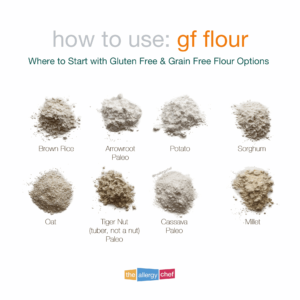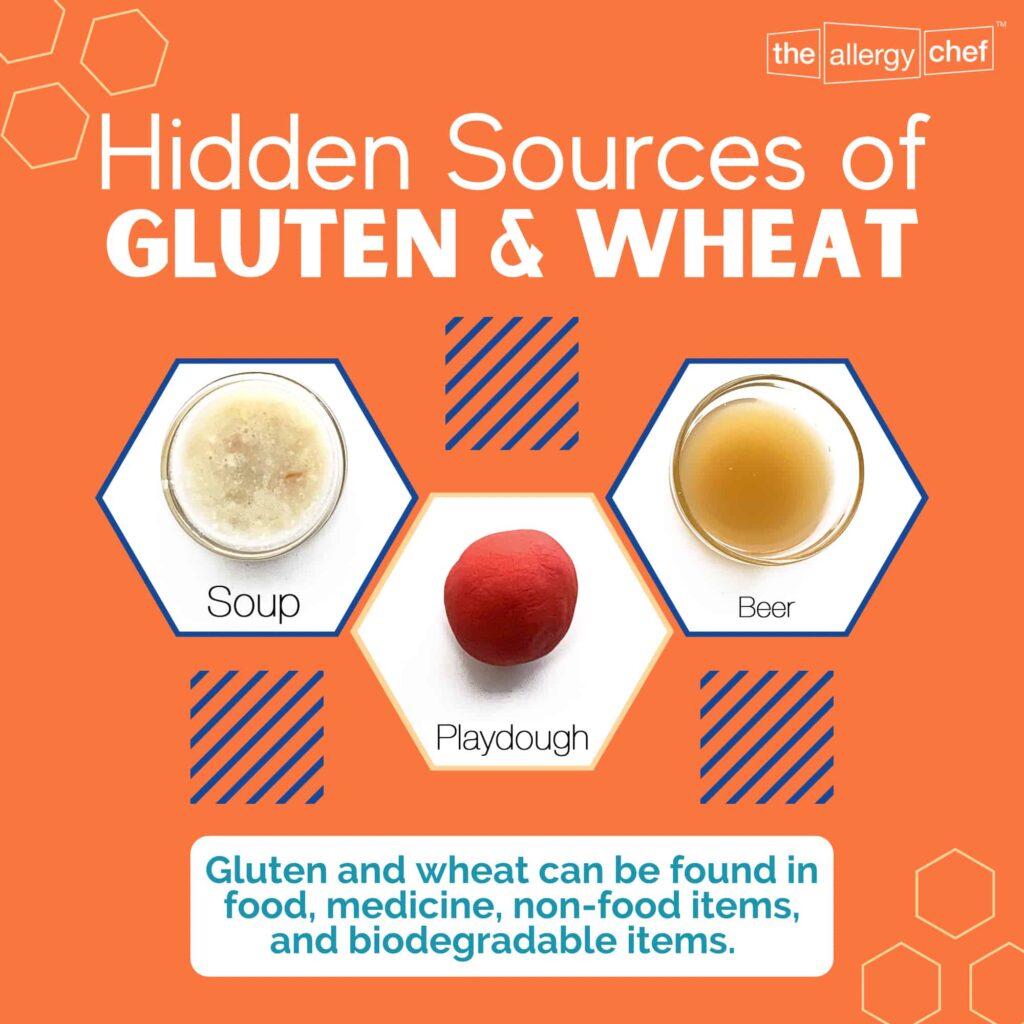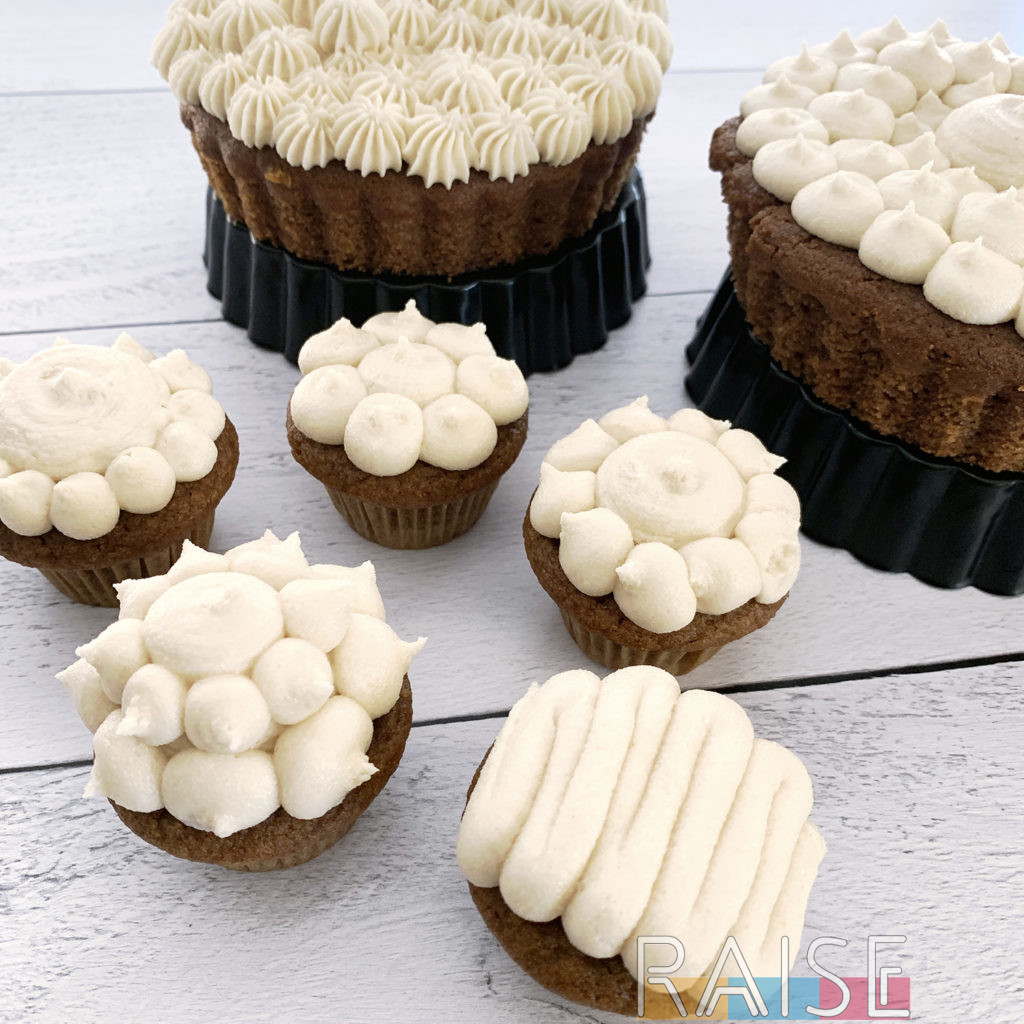If you’re reading this, you’re gluten free for one reason or another. Being gluten free comes with a lot of hoops to jump thru, but for most people following a gluten free diet, it also comes with loads of health benefits. Whether you’re wheat allergic, celiac, paleo, non celiac gluten sensitive, or something in between, this article will help you figure out the basics of gluten free flour, gluten free baking, and grain free options as well. If by the end of this you’re still lost, consider joining RAISE, where you’ll have access to all the tools you need.
First, A Somewhat Funny But Totally Relevant Story
Did any of you grow up with the TV show Captain Planet? I did, and I can totally still sing the theme song. I’ve even shown it to my kids because what kind of parent would I be if I didn’t? Why is this important? Remember when they would all do the things with the rings and then Captain Planet would come out and say “By your powers combined, I am Captain Planet!” That’s what gluten free flour is like!! Oh, and hotdogs too. There’s a really funny shirt about that.
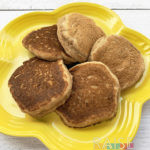
Related Recipe: The Ultimate Gluten Free Fluffy Pancakes
The point that I will keep driving home in this article is that it’s by their powers combined, gluten free can and will taste good.
Defining The Topic
When living the gluten free life, the easiest way to look at flour is by grain, pseudograin, and paleo compliant. I suppose you could also add an exotic label in there as well to catch the wave of new flours hitting the market.
As you read thru this article, I’ll be grouping by these categories to keep things as straight forward as possible. Alternatively, you could group flours by weight in your head if that’s easier. I’ll talk about that later.
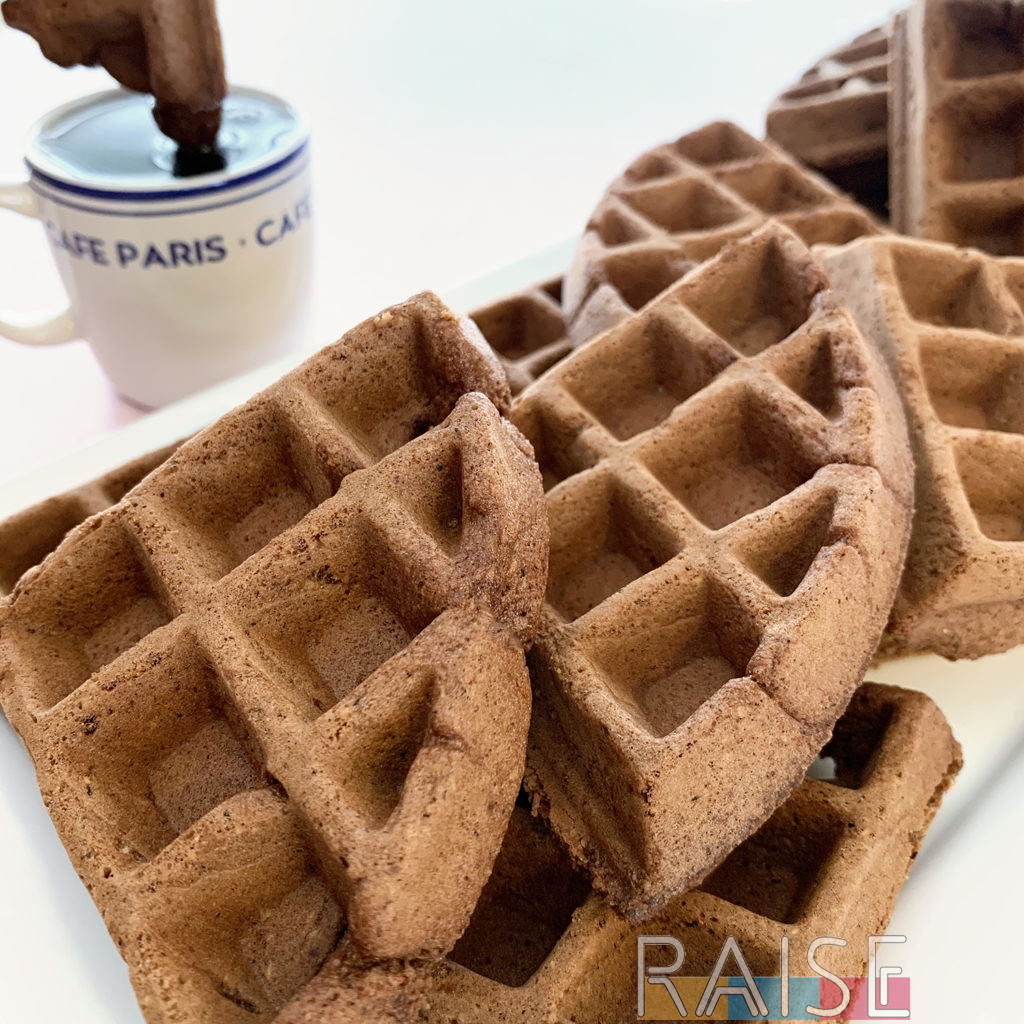
My kids LOVE waffles and have quite the collection of gluten free waffle recipes.
Basic Gluten Free Flour Options
These days there are SOOOO many gluten free flour options. Here’s a list of what I consider basics gluten free flours, aka, things you can find in a lot of stores (in abc order).
- Almond Flour
- Brown Rice Flour
- Cassava Flour
- Corn Flour
- Oat Flour (make sure your oats are gluten free, read more about that here)
- Sorghum Flour
- Tapioca
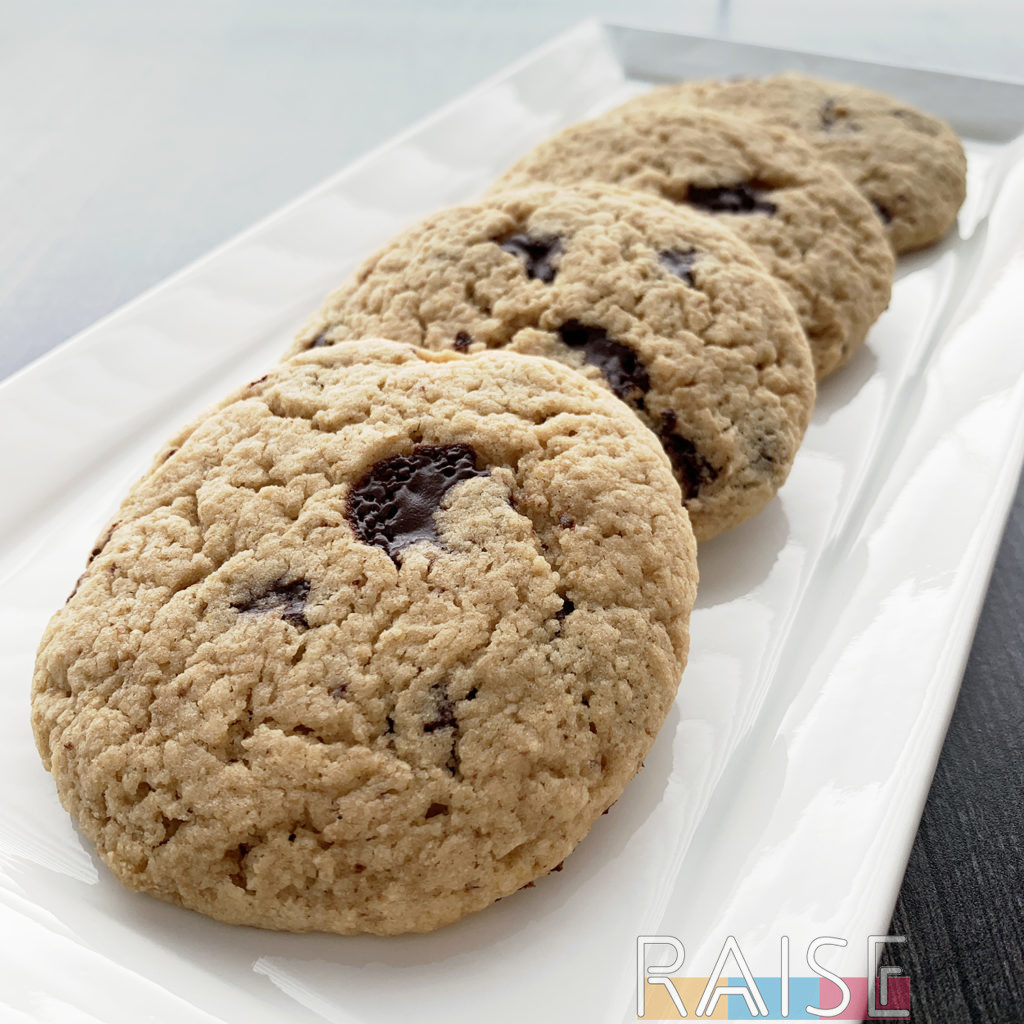
Gluten free cookies are on the menu!
Basic Pseudograin Options
A pseudograin is essentially a faux grain. Something “pretending” to be a grain. A fantastic example is millet. It’s not a traditional/ancient grain, rather a small seed grass that when milled can behave like a grain (sort of… remember Captain Planet). Pseudograins are still carbohydrates, and considered similar to ancient grains because of their behavior.
- Amaranth Flour
- Buckwheat Flour (yes, buckwheat is gluten free, just how tiger nut isn’t a tree nut)
- Quinoa Flour
- Millet Flour
- Teff Flour
- Wild Rice (not the same as traditional brown rice)
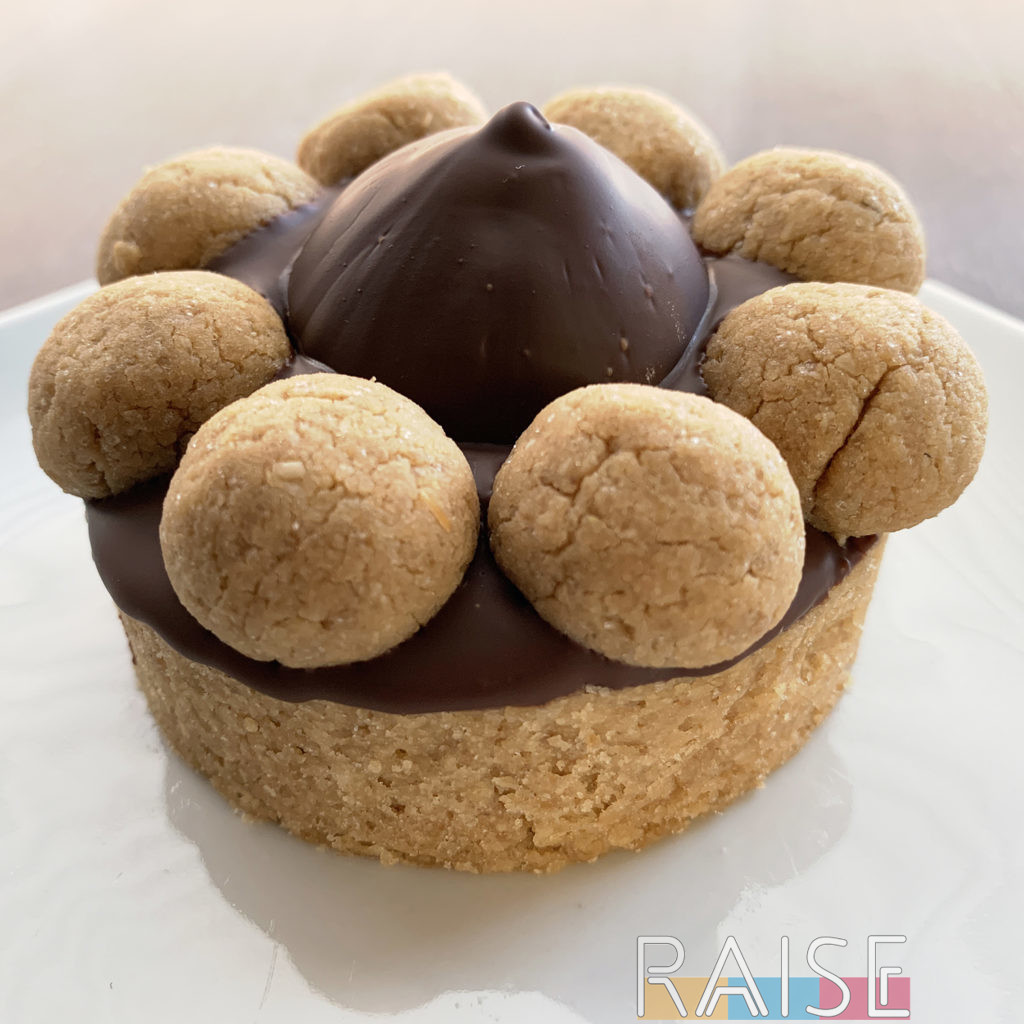
All of the recipes I share are always gluten free 🙂 including this amazing tart.
Basic Grain Free (Paleo) Flour Options
Grain free options are great if you’re following a paleo diet, aip diet, or something in that branch of diet types. Grain free means the flour is not a traditional/ancient grain, nor is it a pseudograin. It’s usually made from nuts, seeds, and root vegetables.
- Almond Flour (and other nut flours)
- Arrowroot
- Cassava
- Coconut Flour (classified as a nut by the FDA for labeling but a botanical drupe)
- Sweet Potato Flour
- Tapioca
- Tiger Nut (not a nut, poorly named, read more about it here)
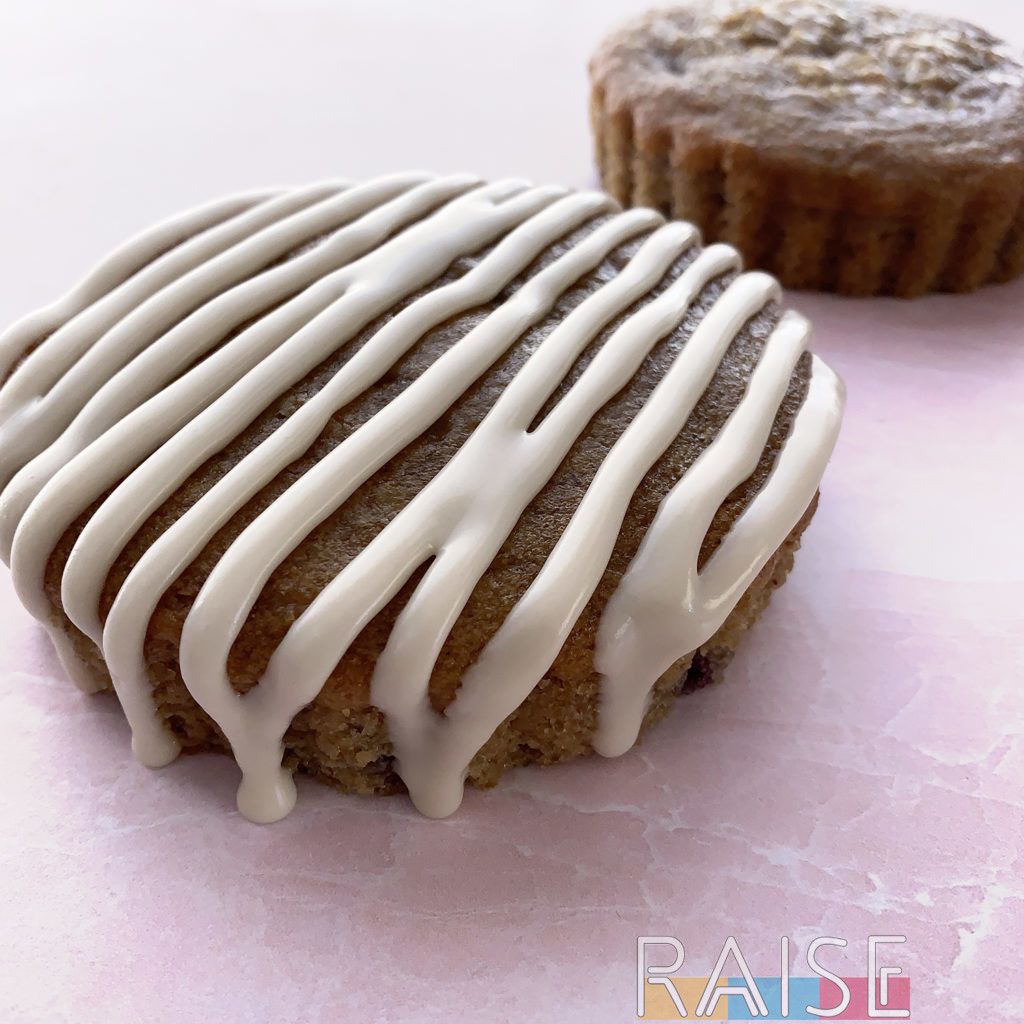
This cherry cake tart is gluten free and features grain free flours.
Exotic/Other Gluten Free Flour Options
Yeah, we totally need this fourth category as some options don’t really fit into the above categories.
- Bean Flours (there are several available these days)
- Fruit Based Flours (Apple, Banana, etc.)
- Vegetable Based Flours (sweet potato, etc.)
Standard vs Superfine Flours
Any flour can be sold in a superfine variety. Superfine means that the flour has been ground into a light powder. In turn, superfine flours produce a lighter, airier result with cakes and other batters, desserts, breads, etc. Superfine flour can also improve texture; so much so that we use superfine flours almost exclusively.
If you want to read further into this, research 00 Flour (wheat based), as well as all of the other numbers. You’ll want to learn more about wheat itself which will then help you understand why we need the blend to replace it properly. Those numbers will help you better understand the protein content of wheat, and the different types of wheat flour available.
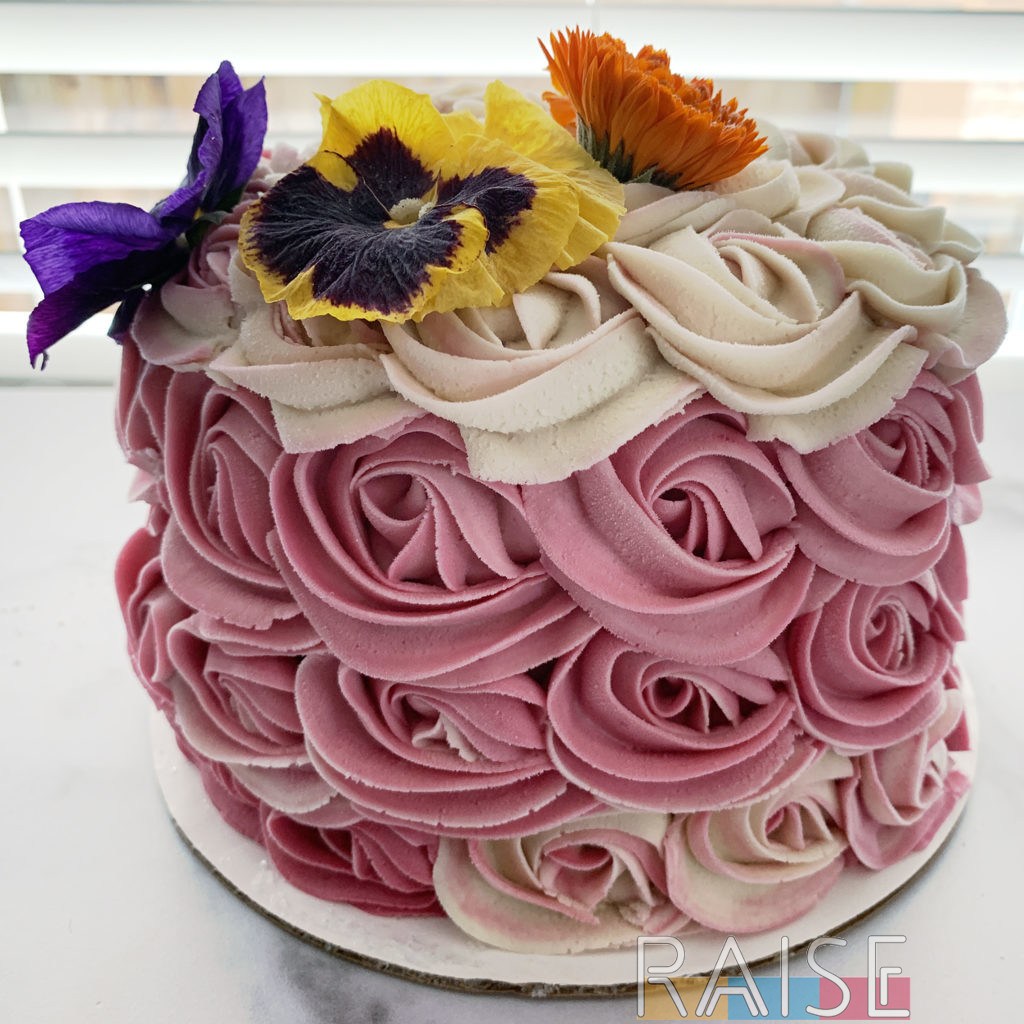
RAISE has a whole section dedicated to Cake! I show you what free-from cakes can really do.
Blanched vs Whole Flour
Not all flours will have this as a commercial option, but it’s something to be aware of. If a developer calls for “rice flour” do they want you to use white rice flour or brown rice flour? Whilst the behaviour is similar, the final texture, colour, and taste will vary.
Almond flour is a more dramatic example of this. If you look online at blanched almond flour versus almond meal (whole ground almond) you’ll quickly see the difference. In the case of blanched almond flour, the skins have been removed and you can technically do more with the flour. It’s also what many recipe developers will call for.
Not All Flours are Created Equally
Different manufacturers will grind and blend their flours differently. One could almost argue that gluten free flour is like wine tasting. It’s all wine, yet each glass has it’s own flavour and body.
With gluten free flours, purchase from a reputable brand. Also depending on why you’re gluten free, you’ll need to call to make sure that your gluten free flour is safe for you. There are several brands that produce certified gluten free products made on shared equipment with wheat. Some people will be fine with this whilst others will need to source safely. RAISE Members, read over the product guides to get started.
If You Want Exact Results, Purchase What The Recipe Developer Used
I once went to visit my good friend Laura from Rustic Scoop and brought gluten free oat flour along. We made tortillas together and she was stunned! She said her tortillas had never come out like that before. We compared notes and realized the difference was: I purchased purity protocol organic gluten free oat flour; and she made her oat flour at home from safe oats.
I say that to say this: if you’re following recipes, be sure to purchase the same brand of ingredients as the recipe developer. This will get your results a lot closer to theirs. I find there’s a lot more wiggle room in this area with wheat flour, but gluten free… nope. Little to no wiggling here.
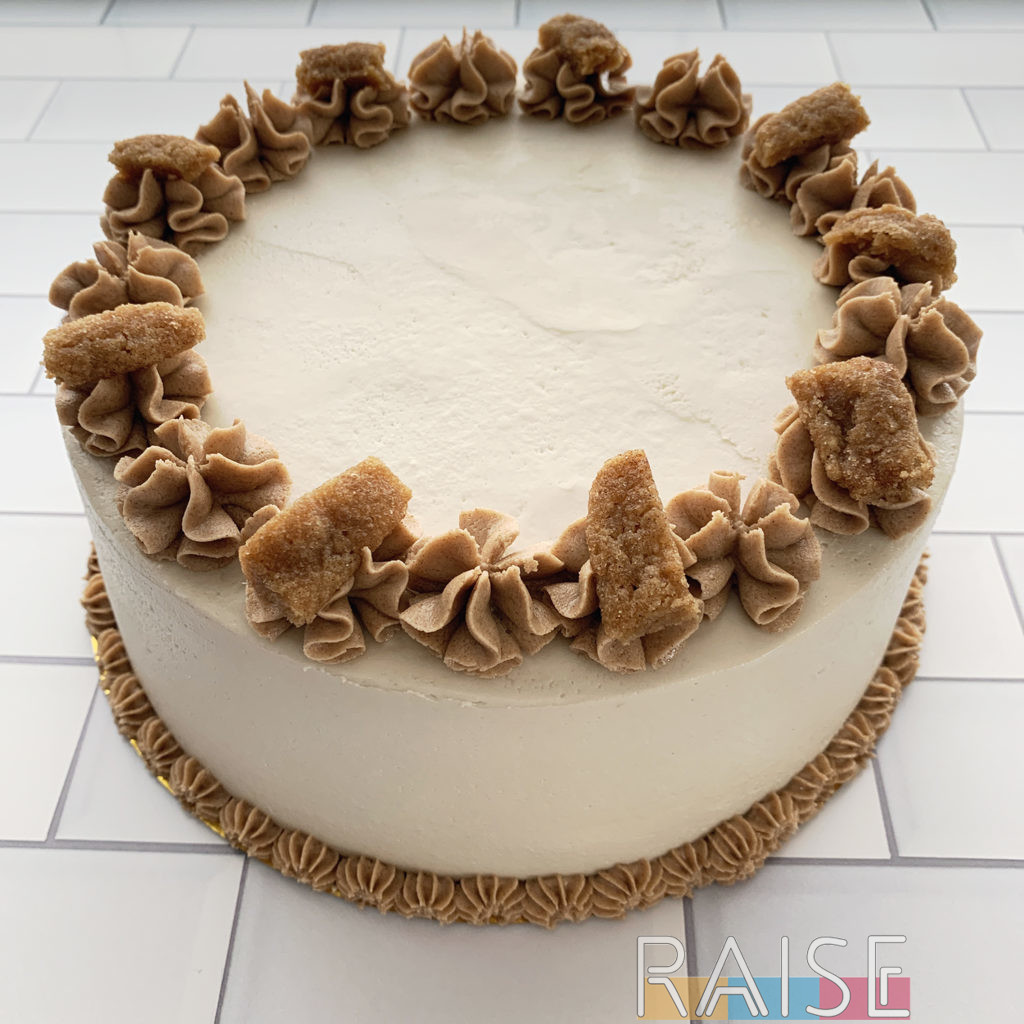
RAISE has GF + Top 9 Free recipes from the award winning bakery I launched.
Gluten Free Baking Basics
Here’s the bottom line: blend your flours. If you ever purchase something like Cup-4-Cup and read the ingredients, you’ll notice that there’s more than one ingredient. There are several flours, and usually something like xanthan gum. Fun fact, xanthan is usually corn derived, so I’ve never had a pre-made blend in our home. I’ve always created the blend from scratch.
Related Recipe: Easy Baking Video: Awesome Chocolate Chip Cookies
Ingredients such as xanthan, guar, et. al. are there for texture and structure improvements. However, you DON’T need them for successful gluten free products. If you join RAISE or follow bakers who are big on clean/minimal ingredients, you’ll notice that we rarely call for these types of ingredients, and all of the recipes are still incredibly delicious.
If you’re not allergic to an ingredient in a pre-made blend, there’s no reason to avoid it. They can make your life easier, however, you’re stuck with the flavour profile they offer. One of the key benefits to scratch blending is the ability to alter the overall flavour and performance by changing your base materials.
For example, when I want something to taste more earthy/nutty, I’ll include oat flour or tiger nut flour. If I want it to taste more corn-like, I’ll use millet (because I’m a severe corn allergic).
I will add this as well: pre-made blends aren’t truly all purpose. Some blends state on the bag what the blend is “good for”. In other words, where it will shine, but they want you to read between the lines and recognize that for other baked goods the flour may not work out so well.
Each recipe developer will have their go-to flour blend. I encourage you to trust their recipes and not make any swaps if you don’t have to. Developing free-from recipes that are GOOD takes a lot of experience and blindly swapping usually doesn’t end well.
How To Blend Gluten Free Flours
Gluten free flours can also be categorized by weight. You have your lightweights (such as arrowroot), your medium weights (such as millet) and your heavyweights (such as brown rice). Every recipe developer will have the ratio/pattern that works for them and you’ll see it in their writing.
When we’re talking about weights, it’s the literal, actual weight of the flour. If you take one level cup of arrowroot and one level cup of coconut flour and weigh them (use grams for accuracy), the weights will be different. Even though they’re both one cup.
Related Recipe: Gingerbread Cupcake/Cake Recipe (Gluten Free, Vegan, Top 9 Free)
When choosing how to blend, you typically select one item from the lightweights, two or three from the medium weights, and one from the heavyweights. It’s RARE that you would want to select only one flour. In fact, one of the worse gluten free breads I ever purchased (back in the day) was rice flour only… like… seriously?
If you’re bold and enjoy experimenting, you should do just that! Mess around until you find the blend that makes you say WOW. The ONLY time you shouldn’t flour blend: you only have one safe flour to work with. I completely understand that some people have a limited range of safe foods. For everyone else, BLEND.
Lightweight Flours: Arrowroot Powder, Corn Starch, Potato Starch, Tapioca Starch
Medium Weight Flours: Fava Bean, Garbanzo Bean, Millet, Oat, Quinoa, Sorghum, White Rice
Heavyweight Flours: Almond, Amaranth, Brown Rice, Buckwheat, Coconut, Corn, Teff
But How Do I Choose?
Well, select what seems interesting to you. Also, be prepared to make a lot of mistakes. That’s half the fun. If you’re not up for experimenting (and possibly wasting money), purchase cookbooks, join memberships like RAISE, follow bloggers online, take a class, etc. If you need it, don’t hesitate to get help so you improve you gluten free baking skills.
When I first started, I was big into buckwheat. Then it evolved into the coolest experiment of all time: brownies. I did single flour bakes of a basic brownie recipe and I learned what the kids liked and didn’t like. From there, I just kept blending.
I will also add: there are several items I don’t use due to allergies in our home. This includes (but isn’t limited to) rice flour, corn flour, and coconut flour. It’s rare that we’ll call for any of these.
Flour Blending When You’re Paleo/Grain Free
When you’re following a paleo diet, it may seem harder to blend, but it really isn’t. All you need is arrowroot, cassava, and tiger nut flour (not a nut). With those three ingredients, I promise, you can make magic. Many paleo recipe developers will call for nut flours and coconut flour. I purposely choose to avoid these to make my recipes available to those who may be allergy + special diet.
How Do I Know This Will Work?
I started a gluten free + top 9 allergy free bakery and had thousands of people WITHOUT food allergies say the baked goods were hands down the best they’ve ever eaten in their life. I’ve also had other gluten free and free-from bloggers tell me what I make is some of the best baked goods they’ve ever eaten in their life. I’ve had bakery customers tell me “I can die now” implying their life is complete now that they’ve eaten my cupcakes. I think the real compliment for me is knowing that I don’t even eat what I bake because I’m allergic to it all. Pretty rad when you think about it.
I’ve made bread, brownies, cakes, pies, biscuits, tarts, and so much more using the flour blending technique. You can find my gluten free recipes on RAISE, and in the cookbooks I’ve published. If you need more assistance, 1-on-1 Consulting may be just what you need. You can get in touch for more details about that.
Check out The Free Recipes
If you want to try this technique, visit the downloads section of the website. There you will find several free recipe files that use the flour blending technique. Be sure to use the same ingredients as me if you want the same stellar results.
That’s not to say you can’t swap, but I won’t be able to vouch for the outcome.
Happy Blending & Baking!!

